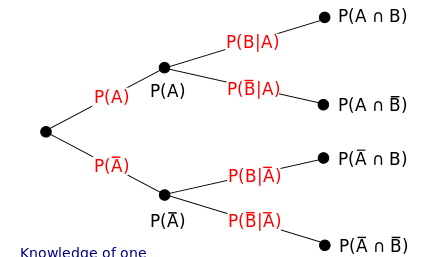Last Updated On: 2020-07-11 16:21
- If hypothesis A is a binary event
P(A∣B)=P(B)P(B∣A)P(A)(1)
- If hypothesis A is a Random event space from a bigger sample space A={A1,A2,...,An}.
P(Ai∣B)=P(B)P(B∣Ai)P(Ai)∀A={A1,A2,...,An}(2)
- Whene hypothesis is a continuous event.
p(a∣b)=p(b)p(b∣a)P(a)(3)
-
Total Probility in different cases
-
P(B)=P(B∣A)P(A)+P(B∣¬A)P(¬A)
-
P(B)=∑jNP(B∣Aj)P(Aj)
-
p(B)=∫∫...∫aP(b∣a)P(a)∀a={a1,a2,a3,...,an}
| Equation |
Name |
Meaning |
| P(A∣B) |
posterior probabilty |
Probability of the hypothesis A, given some evidence B |
| P(B∣A) |
likelihood |
Probability of the evidence if hypothesis is true |
| P(A) |
prior probability |
Probability that hypothesis is true without any constraints (also called as initial probability) |
| P(B) |
total probality |
Probability of the evidence B |

P(A∩B)P(A∣B)P(B)P(A∣B)=P(B∩A)=P(B∣A)P(A)=P(B)P(B∣A)P(A)
| Equation |
Name |
| P(A∣B) |
Conditional Probabilty |
| P(A∩B) |
Joint Probability |
